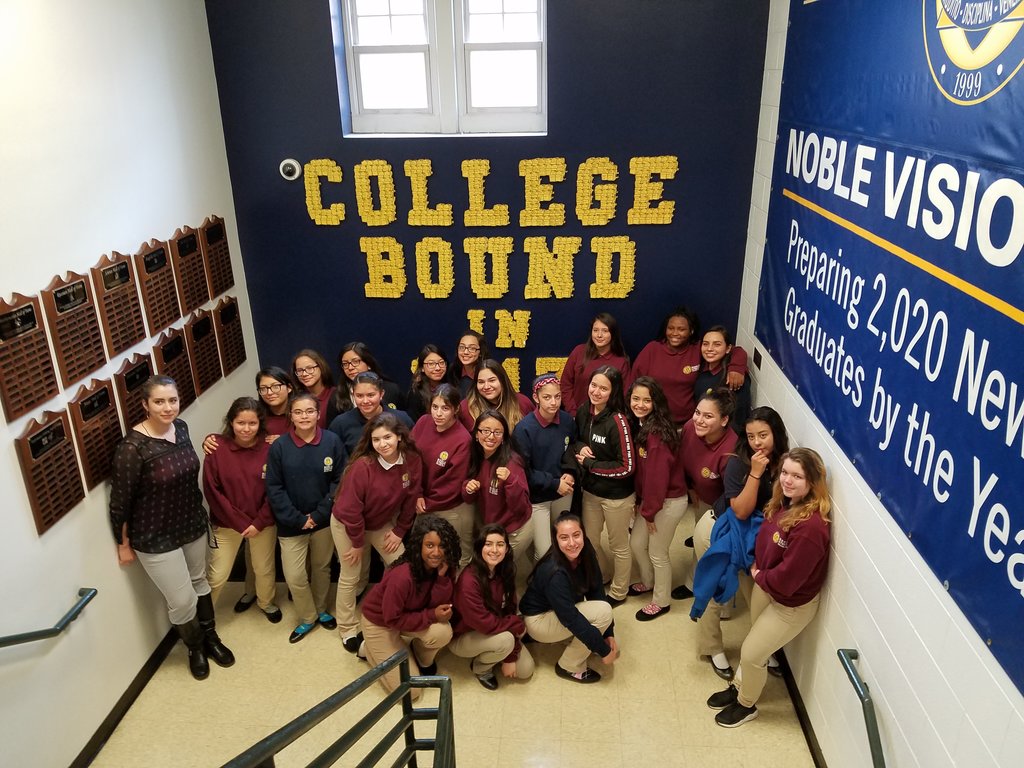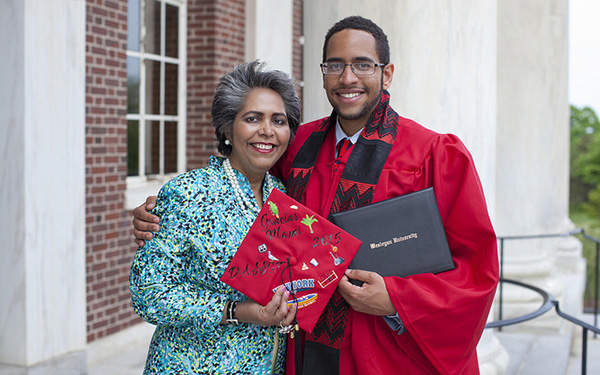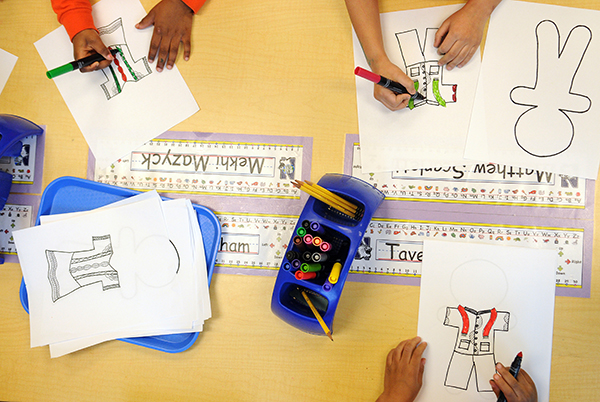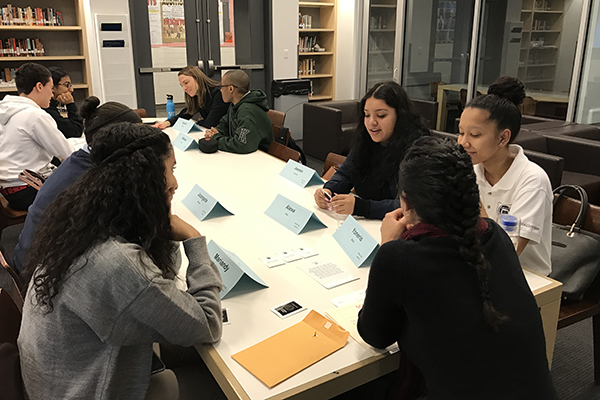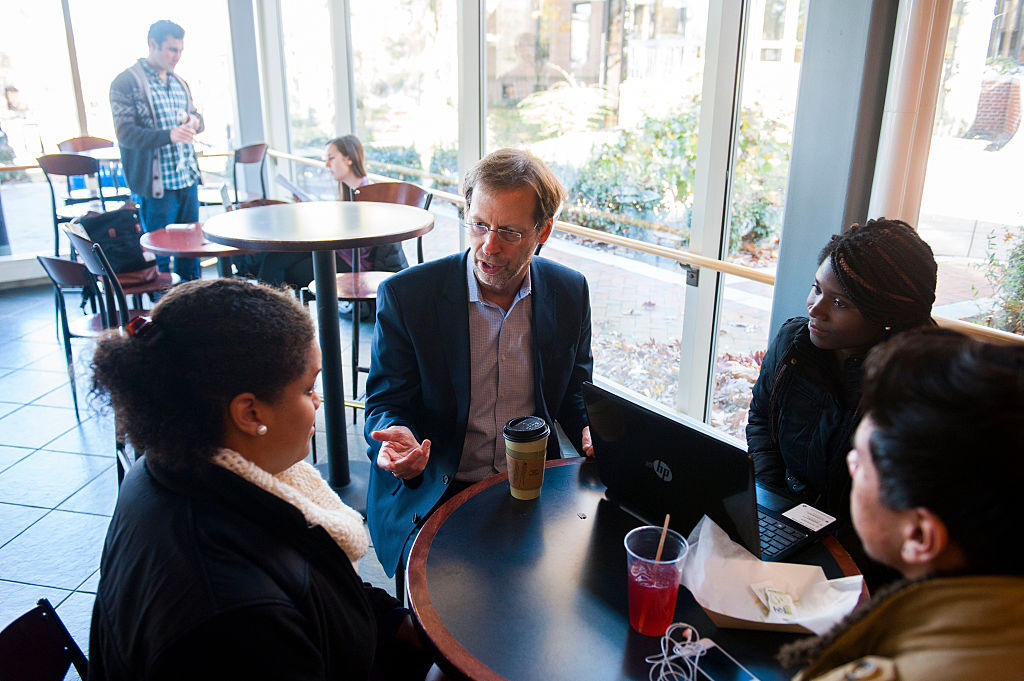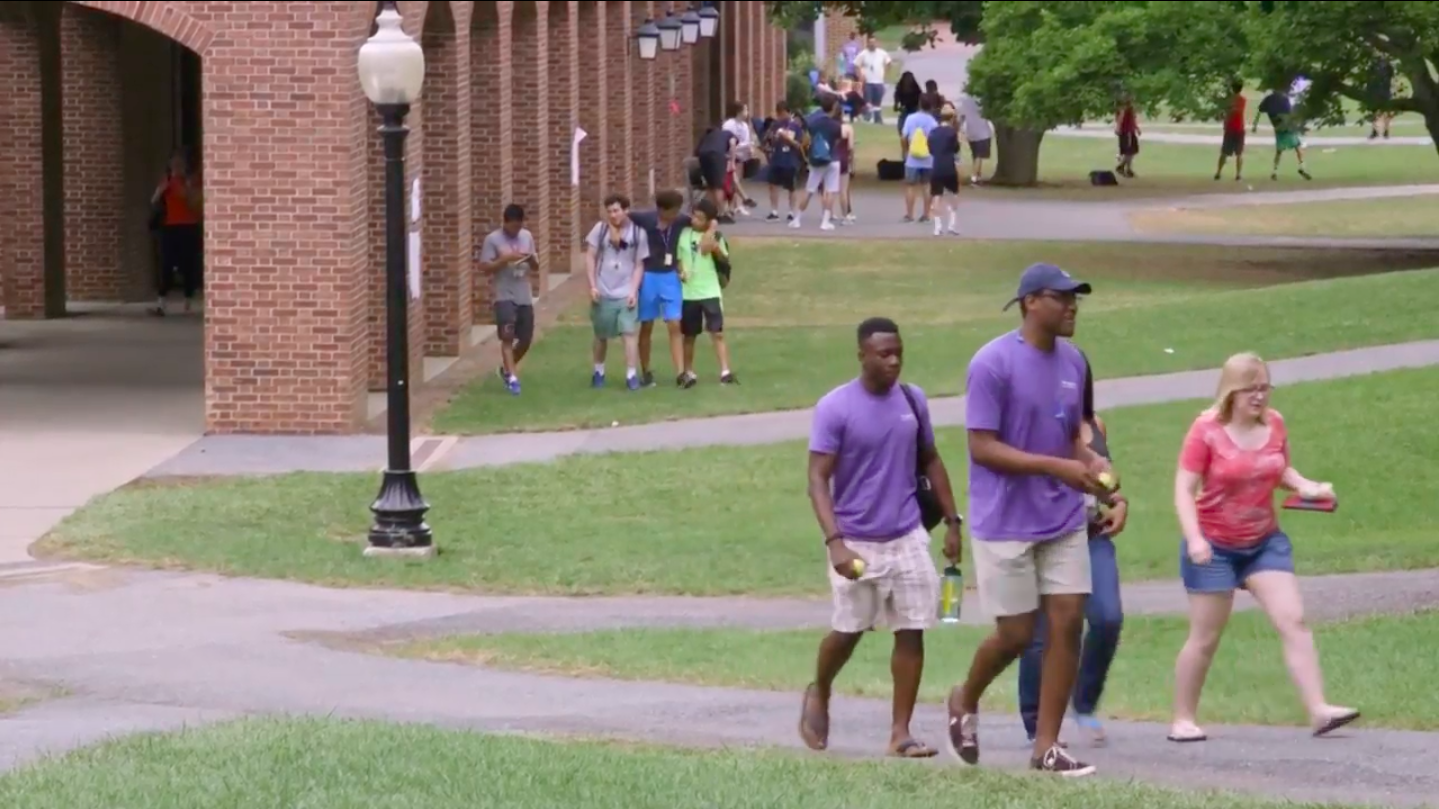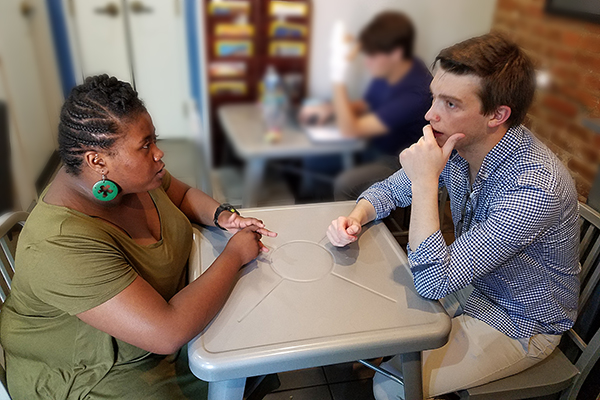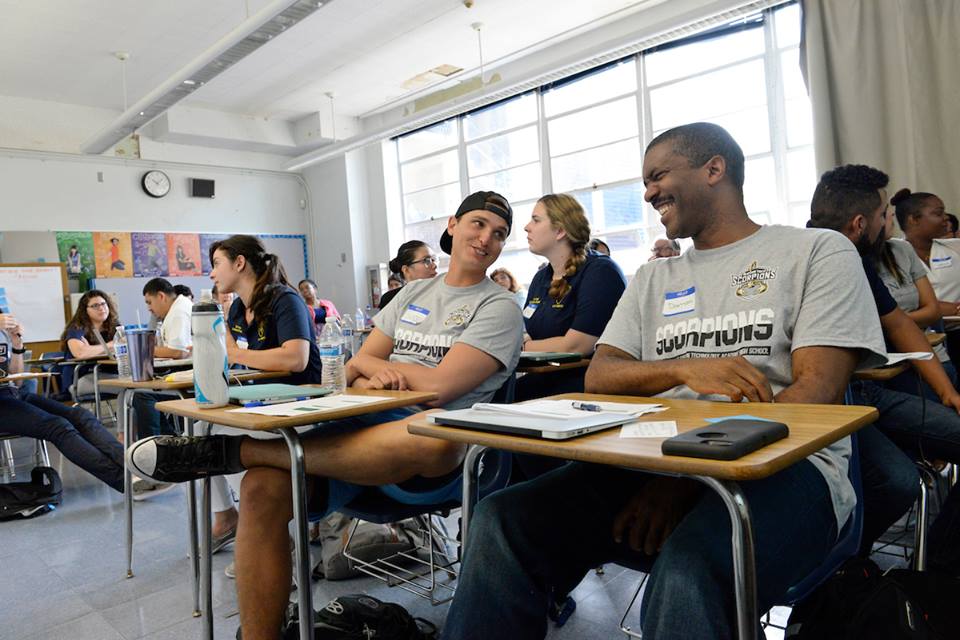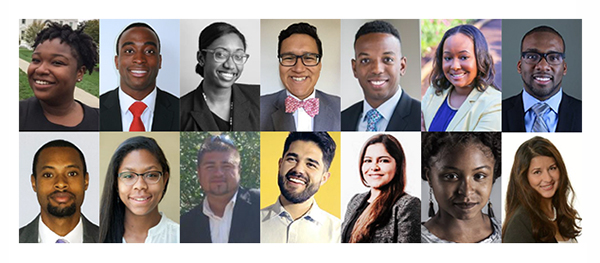Petruzzi & de Jesus: Focusing on College Persistence to Break the Persistent Cycle of Poverty
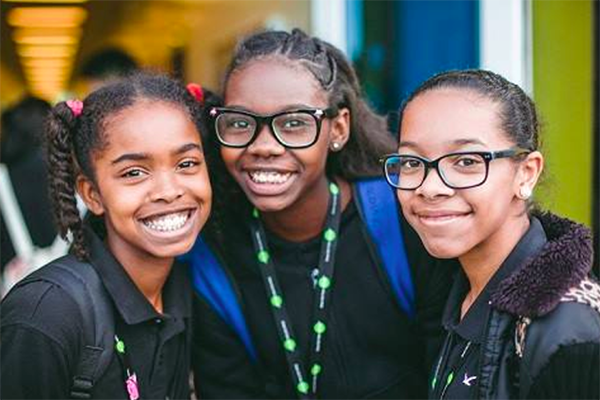
Green Dot students (Courtesy: Green Dot)
The growing attention that charter schools are giving to the issue of college persistence should be seen as a positive development for charter schools broadly. It’s a sign that, while we always need to be focused on addressing the fundamental supports that ensure students graduate from high school, charters are maturing and growing in their greater mission: to provide the students we serve with the tools, experience, and education required for lifelong success.
And it is an even more positive development for charter school students individually. We know that a college education is a singular lever that helps young women and men break free from a persistent cycle of poverty, puts them on a trajectory of upward mobility, and builds the foundation for longer, healthier lives.
A few quick pieces of evidence: In 2015, according to the Economic Policy Institute, college graduates earned 56 percent more, on average, than high school graduates. The unemployment rate for high school graduates typically can run twice that of college graduates. And, according to a study by the University of Maine the same year, college graduates are 44 percent more likely to report their health is “very good” or “excellent.” Finally, for students from families in the lowest quartile of income, the students that Green Dot serves, a college degree is the clearest way of escaping poverty — 90 percent of these students with a college degree jump into the top three quartiles later in life.
We also know that getting to that first day of the second year of college is the pivotal milestone that can mean the difference between a student earning a degree and dropping out of college. That is why at Green Dot Public Schools, we are focused on this moment as a crucial indicator of likely success for our graduates in college and increasingly implementing proven teaching methods that don’t just help students graduate from high school but also prepare them to succeed in college.
We are focusing on non-cognitive skills to help students be prepared to persist — such as self-advocacy and developing positive relationships — and providing our teachers with professional support aimed at how to teach and strengthen these skills. We’re fostering a communal approach, one that provides students with peers and mentors — fellow graduates as well as teachers — so students do not face the challenges of college alone. And perhaps most importantly, we are emphasizing the essential role of relationships so our students have ongoing supports and can turn to trusted faces, whether teachers or on-campus mentors, for advice — including while they are attending college.
In practice, these approaches mean we have to develop meaningful ways to build more connections:
– A robust communications system with our students and graduates, via both text and email;
– Alumni champions — specially motivated educators at each of our high schools supporting a cohort of students through college;
– Intensive and universal counseling that guides students through the college application and acceptance process and then, crucially, through each and every step involved in securing financial aid;
– Physical college tours, which for many students could be their first time on a university campus;
– Working directly with five colleges in Southern California that many of our students attend.
Through such efforts, we are addressing the two biggest hurdles to college persistence — getting enrolled and securing financial aid — and supporting a key factor that ensures a student finishes college: perseverance.
Thus far, we believe our focus on college persistence is paying off. The feedback from our graduates about their interactions with alumni champions and our counselors; about the assistance they receive in applying for financial aid and navigating the college application process; and about the other supports we have implemented has been overwhelmingly positive.
Among our 2015 graduating class, 70 percent of those who enrolled in a two-year college and 82 percent of those who enrolled in a four-year college persisted to their second year.
Unfortunately, this data is far from reliable and not especially useful, and we would caution against relying exclusively and uncritically on the numbers that underpin many college persistence measurements, most of which comes via the National Student Clearinghouse. The problem with the data has nothing to do with Green Dot practices, Green Dot graduates, nor the practices and policies of any school for that matter. NSC gathers its data directly from the colleges, but because student privacy policies differ wildly from state to state and college to college — down to such a micro-level as the different ways and frequency that the question about privacy and data sharing is asked, or on which form the checkbox is placed — the NSC data is inconsistent at best.
There’s no equal, consistent gathering of student information, no way of telling whether students are not showing up because they’ve dropped out of school, changed their name from “Joseph” to “Joe,” or just opted out of allowing their data to be shared. It’s even possible for a student to opt out one year, be eliminated from the NSC, and then opt back in the following year — thus reappearing with what might best be called a “gap” year in between.
This fundamental flaw in the data hampers Green Dot’s ability to measure how our students, teachers, and schools are doing and to answer an essential question: “Are we serving our students well?”
For now, our best measure — hearing directly from our graduates — tells us we are and that the programs and practices we have in place are helping our students succeed in college. But greater empirical evidence could reveal much more: which practices help the most; which challenges are the toughest for students to overcome; whether there are colleges where more support and assistance is needed—even what that assistance might be. The list goes on, and it would vary for each charter operator and every traditional high school.
It is past time we — charters, traditional schools, colleges, the NSC — develop more reliable measures of student outcome. It’s a next logical step in charters’ growth — and an obvious one to better serve our students.
Marco Petruzzi is president and CEO of Green Dot Public Schools National. Dr. Cristina de Jesus is president and CEO of Green Dot Public Schools California.
Your Alumni
Story Here
We Recommend
-
Noble Network of Charter Schools: It’s Not Just About Going to College, It’s Also About Leaving to Learn Outside Chicago
-
King & Peiser: College Completion — Charter Schools as Laboratories
-
Q&A With UNCF CEO Michael Lomax: We’ve Got to Garner More Resources for Low-Income Kids for This Journey “To and Through” College
-
Gilchrist: My Charter School Saved My Life
-
Exclusive: Data Show Charter School Students Graduating From College at Three to Five Times National Average
-
WATCH: At Newark’s North Star Academy, 100% of the Class of 2017 Is Going to College
-
WATCH – The Alumni Tell Their Stories: College Gave Jadah Quick Upward Mobility
-
The Data Behind The Alumni: Unbundling Facts, Figures, and Caveats


